Advertisement
Challenges can be customized in real time based on patient performance
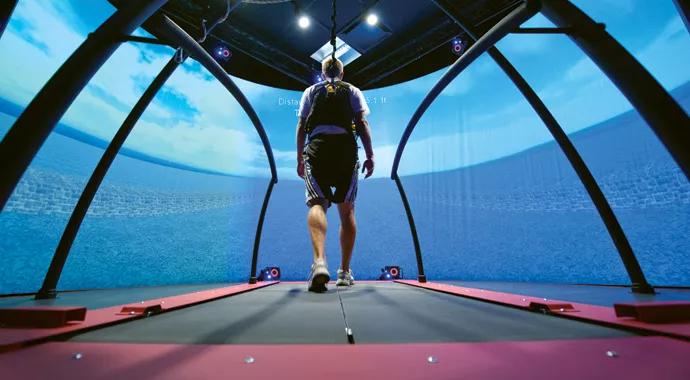
Imagine a patient with Parkinson disease undergoing physical therapy for neuromuscular re-education.
Advertisement
Cleveland Clinic is a non-profit academic medical center. Advertising on our site helps support our mission. We do not endorse non-Cleveland Clinic products or services. Policy
Instead of walking in a straight line on a treadmill surrounded by the sights and sounds of a therapy suite or biomechanics lab, she has the experience of walking along a gravel path. The path feels rocky and uneven beneath her feet, twisting, turning and meandering uphill and down. Surrounded on all sides by trees, a blue sky and chirping birds, with the gravel making a crunching sound underfoot, the patient’s senses are immersed in navigating this challenging walk.
Despite all the sights and sounds, the patient’s experience is a virtual one, taking place in a controlled, safe environment on Cleveland Clinic’s main campus. This scenario has been repeated regularly since the installation of the new CAREN (Computer Assisted Rehabilitation Environment) system at Cleveland Clinic in mid-2013.
The system, manufactured by Amsterdam based Motek Medical, is a high-tech medical and research platform that allows clinicians to view and analyze patients’ balance, locomotion and coordination. It serves as a valuable tool for rehabilitation, clinical analysis and research.
“We want physical therapy to challenge patients, but it’s always a question of how to do so in a safe environment,” says Jay Alberts, PhD, who is leading Cleveland Clinic’s CAREN system initiative. “The CAREN system enables us to safely challenge patients through different courses in an immersive virtual environment.”
Cleveland Clinic’s acquisition of the CAREN system, which was funded by a grant from the state of Ohio, marks the first nonmilitary installation of the platform in North or South America.
The foundation of the CAREN platform is a “6 degrees of freedom” motion base that turns and moves up and down or left and right. The base is topped with force plates or an instrumented treadmill, and the system has real-time motion capture capabilities that integrate visual projection and surround sound.
Not only can patients experience walking on a path, they can navigate a boat deck, stroll through an airport or simulate just about any scenario from real life — all under close monitoring (and while harnessed for safety).
“Challenges can be customized, with levels of difficulty automatically based on patient performance,” explains Dr. Alberts, who is Director of Cleveland Clinic’s Concussion Center and a researcher in the Department of Biomedical Engineering. “The system registers and reacts more quickly than human perception, making microadjustments and even going into a soft shutdown as needed.”
The system allows for the registration, evaluation, clinical analysis and rehabilitation of balance, including the body’s visual, auditory, vestibular, tactile and proprioceptive systems. Its software merges data from all hardware components, enabling measurable and quantifiable evaluation, rehabilitation and research, leading to constantly monitored progression.
“Beyond the virtual immersion features, the system is a complete biomechanics laboratory — in a quarter of the size of a traditional lab,” Dr. Alberts says. “It measures EMG muscle activation patterns in real time, helping identify where a patient may have a deficiency and what can be done to improve it.”
Advertisement
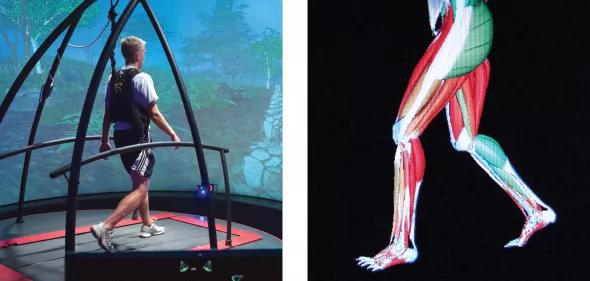
With the CAREN system, neurologists, rehabilitation specialists, orthopaedists, occupational therapists and physiotherapists can collaborate with one another — and with researchers in biomechanical engineering, pediatrics, mental health and other disciplines —to both evaluate patients’ functional behavior and help restore or improve that function.
A computer scientist rounds out the interdisciplinary mix, writing code to customize virtual scenes and experiences beyond those provided with the system.
“Protocols and programs currently being developed using CAREN are leading the creation of groundbreaking rehabilitation techniques,” Dr. Alberts notes.
Since patients began using the CAREN system in September 2013, their reaction has been enthusiastic. “Patients like its gamelike and interactive features,” says Dr. Alberts. “From our standpoint, it offers the best of both worlds — it’s engaging for patients while measuring outcomes in a highly systematic, objective way.”
So far the system has been used primarily for patients with Parkinson disease and multiple sclerosis, but it has many more potential clinical applications, including the diagnosis and treatment of various neuromuscular and other neurological conditions. Plans are underway to use the system in the Concussion Center, including for facilitation of return-to-play decisions for concussed athletes.
The system is also at the heart of translational research efforts. “Using the CAREN system for research will help us clinically, and clinical utilization certainly complements our research efforts,” Dr. Alberts says.
By validating measurements taken using mobile devices, the CAREN system also can facilitate development of mobile health apps. “We can use information learned from the system and transfer a pared-down version to a mobile app,” Dr. Alberts explains. “We’re working on customized multiple sclerosis and Parkinson disease apps, and data from the CAREN system should allow us to develop them much more quickly.”
Advertisement
Advertisement
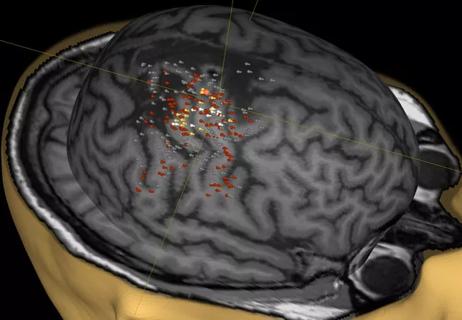
A noninvasive approach to map eloquent areas before surgery
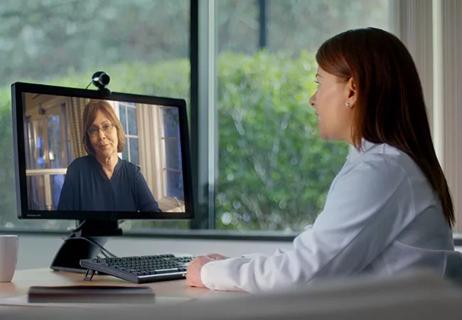
Physician reimbursement policy experts join forces with IT and coders to enable digital transformation
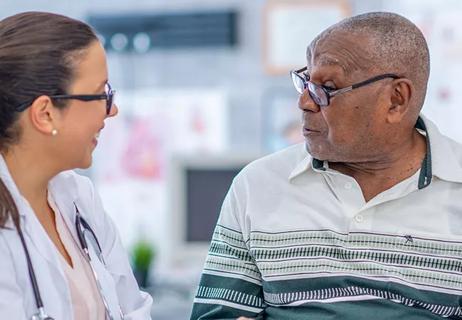
Minority Stroke Program focuses on outreach to racial and ethnic minority communities
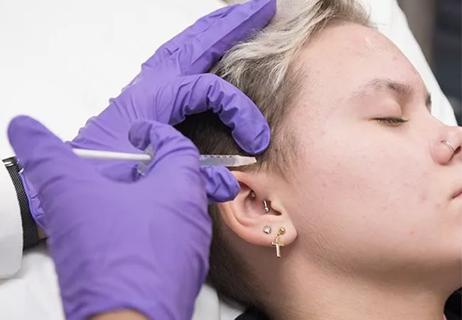
Excellent response seen with ongoing use in patients as young as 11

Q&A with a psychiatrist in Cleveland Clinic’s Transgender Surgery and Medicine Program

Time constraints, language barriers, substance misuse, mood disorders targeted for improvements
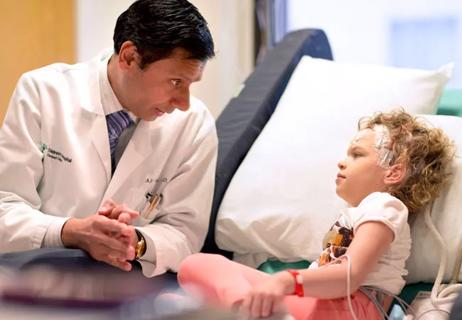
Project draws $1.6M to leverage telemedicine to create medical home, ease transition to adult care
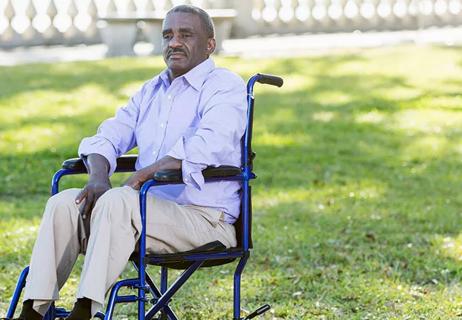
Comorbid depression is only one of the likely warning signs